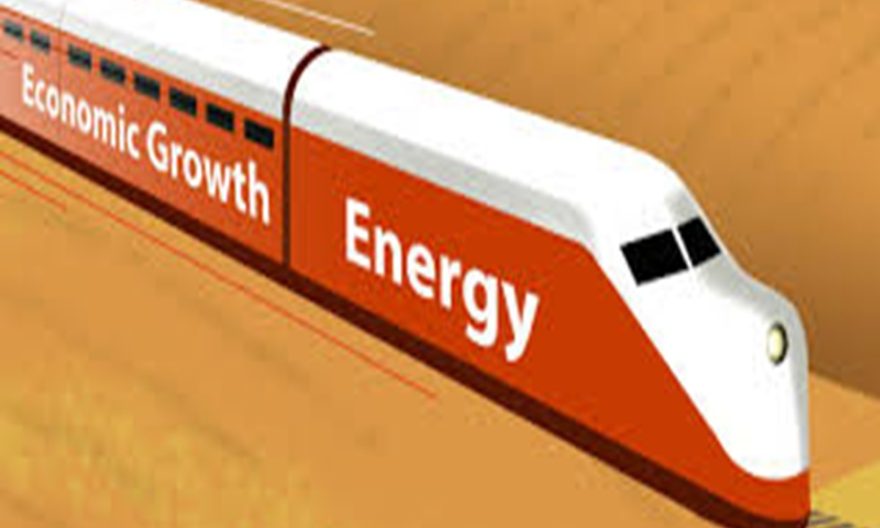
It is well recognized that energy is tightly linked to economic development and growth. It is also clear that higher levels of GDP are correlated with greater electricity use, access, reliability, and affordability. When we understand the causal link between economic growth and energy, there is ultimately no route to development without greater energy consumption.
Taking this fact into account, The Ethiopian Herald had a short satay with Mekonnen Simie, an agro economist as well as environmentalist graduated from Addis Ababa University and working as a consultant, to have professional point of view about the amalgamation between energy and economic development/growth.
He said, “Prior to the industrial revolution, economies were bound by the availability and usage of organic energy sources, including firewood, man-and horse-power. When innovation and technology allowed coal to be used as an energy source, substantially more production possibilities were unlocked, leading to exponential production and economic growth. What needs to be asked along this line is can investment in energy infrastructure directly lead to growth or does it simply follow growth?”
According to Mekonnen, the contribution of modern energy forms to higher incomes and greater economic well-being is quite immense. Energy markets are potentially very large and are set to grow for most of the century.
As to him, for users to value and utilize energy, it must be accessible, reliable, and affordable. Accessibility is determined by infrastructure, including proximity to the grid, but also the affordability of grid connections, with evidence highlighting the link between high connection charges and low access.
Reliability is important in allowing households and firms to plan investments and activities. However, in many lower-income countries, blackouts are frequent and electricity access fluctuates throughout the day, due to infrastructure, markets, and politics. The price of electricity also determines its value and usage, which is informed by supply costs and the extent to which users pay their bills. Accessibility and reliability interact with pricing – for example, households might be unwilling to pay a given tariff for an unpredictable service. At the same time, a lack of payment or users might prevent investment in service improvements.
Effective infrastructure is key to ensuring energy can be productively. The entire electricity grid, a network of infrastructure that includes generation, transmission, distribution, and wiring and metering – needs to work together. Beyond the electricity grid, infrastructure underpins the supply chain of most modern energy sources, such as physical networks of oil and natural gas pipelines, refineries, wind turbines, hydropower dams, and the many different transportation elements between them.
“Focusing on the entire network of infrastructure may help unlock the potential of energy infrastructure for development. Different parts of energy infrastructure, and in particular the electricity grid, are highly linked and interdependent. Every link must function well; investments in the weakest link may have the most transformative impact. For example, targeting investment in transmission infrastructure in the country found substantial short-run welfare gains,” he said.
As learnt from Mekonnen, roads and ports generally are important pieces of infrastructure that help deliver energy services, such as acquiring the fuel used in energy generation. Other infrastructure influences the prices of other factors of production, which in turn affect the impact of energy infrastructure on economic growth and development. Energy infrastructure will be more transformative when other markets are also primed for growth, such as well-functioning markets for outputs and credit, and active labor markets.
He said, “With climate change intensifying over the coming century, there will be significant demands on and requirements of energy infrastructure. Infrastructure itself is vulnerable to natural disasters, which will increase in frequency and severity. Additionally, climate change will likely induce greater demand on energy, such as from households requiring more cooling in the face of a growing number of hot days.
To mitigate the impacts of energy use on climate, which in turn, drives energy use, energy infrastructure will need to support households in lower-income countries transitioning from traditional to modern sources of fuel, and grid electricity transitioning from fossil fuels to renewables. These issues will add new challenges to developing effective energy infrastructure for economic development.”
According to Mekonnnen, the later a country industrializes, the lower its peak energy intensity because of intervening improvements in the efficiency of energy conversion processes— especially for electricity generation—and energy use. Such improvements in energy efficiency mean that developing countries are likely to need less energy to produce a unit of GNP and to meet consumer needs per unit of income than was the case for the industrialized countries. How much less is controversial, because of ambiguities in the evidence and oversimplifications in both the engineering and economic models of energy consumption.
“Energy demand in developing countries will rise enormously as per capita incomes and populations grow. Energy demand in industrialized countries is also likely to remain strong, notwithstanding—and to some extent, because of—continuing gains in the efficiency with which energy is produced and used. Both energy resources and financial resources are amply available to meet market needs. But will solving the ‘pollution problem’ from energy use prove too costly from an economic perspective? There is no evidence that it will, and most assessments point to the likelihood of an improvement, not a deterioration, in economic prospects with enlightened environmental policies,” he opined.
Technologies are now available for addressing the most serious forms of local and regional pollution from fossil fuel use, at costs that are small relative to the costs of energy supplies. So there is every reason to be sanguine in this respect. In fact, developing countries are in a position to address their local and regional pollution problems at a far earlier phase of development than were the industrialized countries before them—within the first third of this century if they wish. Furthermore, there are highly promising options for addressing global warming in the long term—renewable energy, hydrogen-related technologies and fuel cells, for example— which could be developed through enlightened research, development, and demonstration policies.
Much therefore will depend on energy and environmental policies. In reviewing the ground rules for such policies, the chapter shows that the aims of developing countries for achieving economic prosperity and of industrialized countries for improving theirs are fully consistent with those of simultaneously meeting rising world energy demand and realizing a low-pollution future.
In fact, she said modern energy forms are an economic good, capable of improving the living standards of billions of people, most of all the billions of people in developing countries who lack access to service or whose consumption levels are far below those of people in industrialized countries. Technologies are available, emerging, or capable of being developed that can solve the pollution problem at a small fraction of the overall costs of energy supplies. The more policies recognize the distinction, the more likely will we be able to meet rising world energy demands with greatly reduced pollution. Furthermore, once the benefits of pollution abatement are taken into account, economic output and well-being are likely to be higher not lower.
“In developing countries like Ethiopia the net effects on growth should be even greater, since their environmental priorities in the energy sector include the elimination of smoke, emissions of particulate matter, lead in fuels, and the indoor air pollution and damage to soils and forests arising from the use of traditional fuels. Thus there is no reason from an economic perspective why developing countries like ours cannot adopt ambitious policies for reducing local and regional pollution from energy production and use. The technologies and practices are now available that should, if the ‘right’ policies are put in place, enable developing countries to reduce such sources of environmental damage at a much earlier phase of development than was the case for industrialized countries,” he stated.
Developing countries especially need to become engaged in the development and use of such technologies. Clean energy is moving towards center stage in the global energy system – and as its importance rises, a new clean energy economy is emerging. At the same time, global investment in clean energy manufacturing is booming, driven by industrial policies and market demand. Quantifying the expanding role of clean energy in the economy is therefore essential to fully understand the stakes and momentum behind energy transitions.
Clearly, he said assessment based on a first-of-its-kind analysis of three categories of activity in the clean energy sector: Manufacturing of clean energy technologies: investment in clean energy manufacturing, covering the value chains for solar PV, wind power and battery manufacturing Deployment of clean power capacity has to be conducted: investment in deployment of clean electricity generation capacity – such as solar PV, wind power, nuclear power and battery storage – and in electricity networks needs to be consolidated.
Clean equipment sales: sales of electric cars (EVs) and heat pumps. It is based on detailed project-by-project data gathered and processed by the International Energy Agency (IEA) from primary and secondary sources. We conducted this analysis at the country level, and present here the in-depth results for four of the largest economies: the United States, the European Union, China and India, which together account for two-thirds of global GDP.
In sum, sustained economic growth is a mantra for governments worldwide and is seen as having a key role to play in poverty alleviation. But economic activity is predominantly linked to the use of energy, principally from fossil fuels, which account for over 60% of global greenhouse gas emissions. This implies an urgent need to decouple economic growth from energy use
BY MENGESHA AMARE
The Ethiopian Herald December 25/2024





